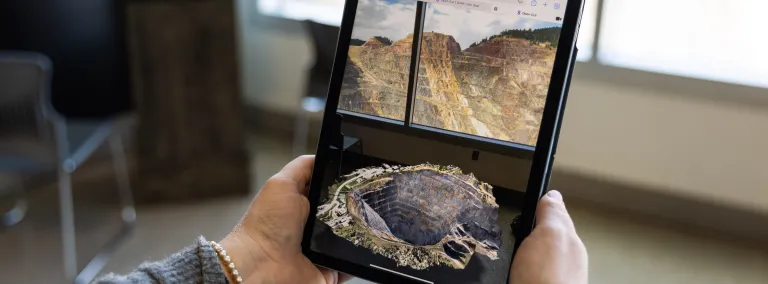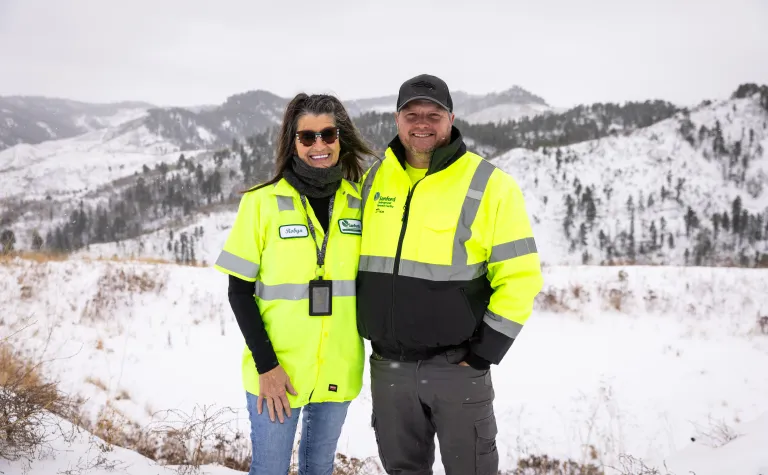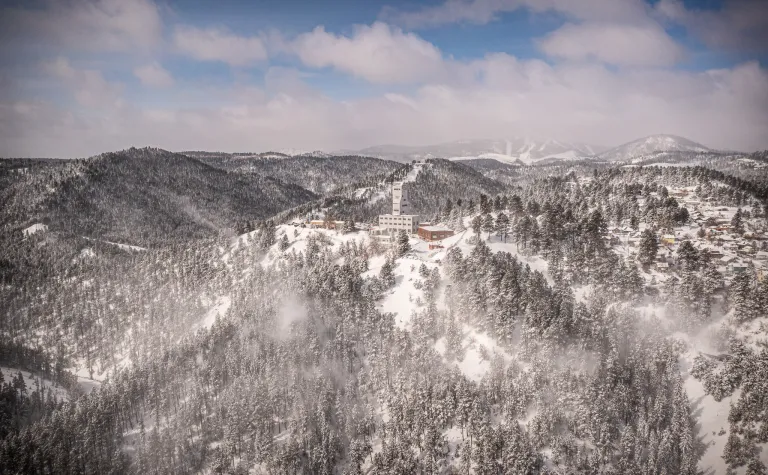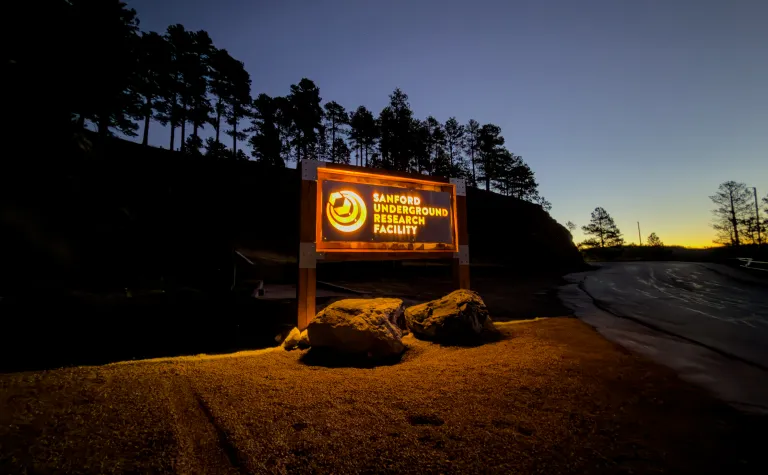Sanford Lab Homestake Visitor Center debuts augmented reality in two exhibits
Augmented reality is adding to the visitor experiemce at SURF.
The Open Cut, in Lead, SD, is about 1200 feet from the very top to the very bottom. The Sanford Lab Homestake Visitor Center (SLHVC) is perched on the edge of one side of this massive precipice. The Open Cut is so deep that visitors can’t actually see the bottom from the center’s viewing deck. But a creative use of a technology known as augmented reality has made viewing the entire Open Cut possible.
Thanks to augmented reality, visitors can now peer all the way to the bottom of the Open Cut using their own smart phones. A simple scan of the QR code located near the viewing windows at the visitor center loads an interactive 3D image of the Open Cut onto the smart phone screen. A viewer can move the 3D image and zoom in and out to get a better view and understanding of the massive scale and shape of this feature.
“With augmented reality, visitors to the SLHVC can explore, in detail, sites and artifacts that are otherwise inaccessible to the public. Being able to engage with these 3D images provides a unique perspective, one that sparks curiosity and leads to a deeper discussion of what is being viewed,” said Kelly Kirk, the director of the Sanford Lab Homestake Visitor Center.
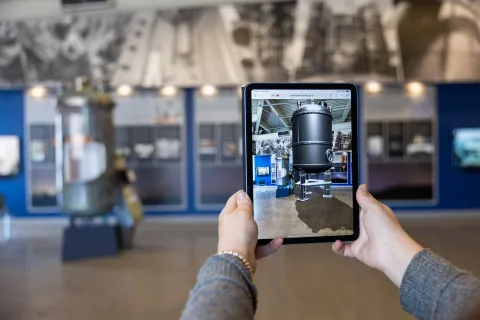
Visitors can also explore and learn about one of the key elements of research at SURF using augmented reality. The SLHVC is home to the former Large Underground Xenon (LUX) dark matter detector. During its operation, between 2013 and 2016, LUX was the most sensitive dark matter experiment on Earth. Visitors can see and touch the titanium shell of the liquid xenon chamber that made up the heart of LUX. Thanks to augmented reality, visitors can also view the much bigger liquid xenon chamber for the LUX-ZEPLIN (LZ) dark matter experiment sitting next to its smaller predecessor, LUX. LZ is 20 times larger than LUX and a scan of a QR code loads LZ onto a smartphone screen and places it in the room where it towers above LUX.
“We wanted to give visitors a real sense of scale with the LZ cryostat. LZ towers over LUX, standing more than 13 feet tall. Visitors will get a chance to walk around the model and view it as if it’s right there in front of them,” said Stephen Kenny, multimedia specialist at SURF who helped to design the augmented reality display.
LZ is currently the world’s leading dark matter experiment. Seeing a 3D rendering of the liquid xenon chamber for LZ outside augmented reality at the SLHVC is almost impossible at present time. LZ is currently operating 4850 feet below the town of Lead. In addition, the inner titanium chamber is covered up, a little like the core of an onion, there are several layers of tanks inside other tanks providing the necessary shielding to maximize the sensitivity needed in the hunt for dark matter.
“Giving visitors at the SLHVC the ability to see and touch a small piece of science history has always felt very worthwhile, the interest is evident. Giving them now the ability to tour the current generation of experiment virtually can only add to the experience, and perhaps indeed ignite vocations,” said Simon Fiorucci, operations manager for the LZ experiment and a program manager at Berkley Lab.
Part of the mission of the Sanford Underground Research Facility is to inspire learning across generations. More augmented reality exhibits are being discussed at the SLHVC to further enhance learning opportunities for all visitors.
“We’re very excited to share these augmented reality experiences with visitors and we are looking forward to developing more of them,” Kenny adds.
